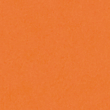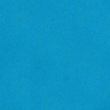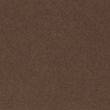Wax Seals - An Important Part of Envelope History
- By Andrew Jacobs
- Oct 24, 2013
Seals
The origins of using a seal to stamp documents dates back way before the invention of paper. Cylinder seals were used in areas of the world like Mesopotamia to sign clay tablets as a form of authentication. Fast forward a couple hundred years to the Middle Ages when paper was available. People in positions of power like royals, monarchs and bishops were all instilled with an official seal. They would sign contracts, agreements and letters with this seal; which many times could be in place of someone's actual signature. [caption id="attachment_3425" align="aligncenter" width="400"] 81 wax seals attached letter sent by English noblemen to Pope Clement VII[/caption]
81 wax seals attached letter sent by English noblemen to Pope Clement VII[/caption]
Seals for Letter Writing
During the Middle Ages, the need to grow and expand was at its peek. New colonies and civilizations were established, and written communication was done solely through letter writing. Wax seals were used for keeping communication confidential. If a seal was broken by the time the letter arrived to its destination, the recipient would know it was tampered with. Wax seals were also practical too. Way before the invention of pre-gummed envelopes, wax seals were the only way to properly close a letter to keep its contents secure.Present Day
In this day and age wax seals are used for more of a decorative accent to invitations than they are for royal documents. Wedding invitations can be sealed with a decorative wax seal to give them a unique and classic appearance. While the traditional wax used was red or black, they now come in a wide array of colors and textures.Although some may have an authentic seal with a family crest past down to them as a family heirloom, today wax seals are often sold as prepackaged kits with decorative letters as the seal. Check out our selection of wax seal kits. They are available in every letter of the alphabet and have seven different wax stick colors to choose from.
The Fascinating History of Wax Seals
Wax seals have been an important part of envelope history for centuries, dating back to ancient civilizations such as the Egyptians and Romans. Used as a method of securing and authenticating documents, wax seals were initially made from beeswax and resin. Over time, they evolved into a symbol of power and authority, often bearing the insignia of noble families and royalty. Today, wax seals are still used for decorative and ceremonial purposes, adding a touch of elegance and tradition to invitations, letters, and packaging. The art of creating wax seals has also experienced a revival, with modern enthusiasts embracing the craft and incorporating personalized designs.
The Benefits of Using Wax Seals
Using wax seals adds a sense of sophistication and personalization to any correspondence or packaging. They provide a unique and elegant way to seal envelopes, invitations, and gifts, making them stand out and leaving a lasting impression on the recipient. Additionally, wax seals can also serve as a form of security, ensuring that the contents of the envelope remain intact and tamper-free. With a variety of colors and designs available, wax seals offer endless possibilities for customization, allowing individuals to express their creativity and style.
Use Cases for Wax Seals
Wax seals can be used for a wide range of purposes, from formal events such as weddings and corporate functions to personal correspondence and gift wrapping. They are a popular choice for sealing wedding invitations, adding a touch of old-world charm and elegance to the occasion. In business, wax seals can be used to authenticate important documents and add a professional and distinguished touch to corporate stationery. Additionally, individuals can use wax seals to add a personal and decorative element to their everyday correspondence, making each piece of mail feel special and unique.
Alternatives to Wax Seals
While wax seals are a classic and timeless choice, there are alternative methods for sealing envelopes and adding a decorative touch. Self-adhesive wax seals offer the same elegant look and feel as traditional wax seals but with the convenience of a peel-and-stick application. For those looking for a more modern approach, custom stickers and embossing stamps can also achieve a similar effect, allowing for personalized designs and easy application.
Tips for Using Wax Seals
When using wax seals, it's important to choose the right type of wax, whether traditional beeswax or modern alternatives such as flexible sealing wax. Ensuring that the wax is at the correct temperature and consistency is crucial for achieving a clean and well-defined impression. It's also essential to invest in a high-quality seal stamp to create a clear and crisp design. Additionally, experimenting with different colors and finishes can add a unique and personalized touch to each seal, allowing for endless creativity and customization.
Embracing the Timeless Tradition of Wax Seals
Wax seals have stood the test of time as a symbol of elegance, tradition, and personalization. Whether used for formal occasions, business correspondence, or everyday mail, wax seals offer a unique and sophisticated way to add a special touch to any envelope or package. With a rich history and timeless appeal, wax seals continue to captivate and inspire individuals seeking to elevate their correspondence and embrace the art of traditional craftsmanship.

















